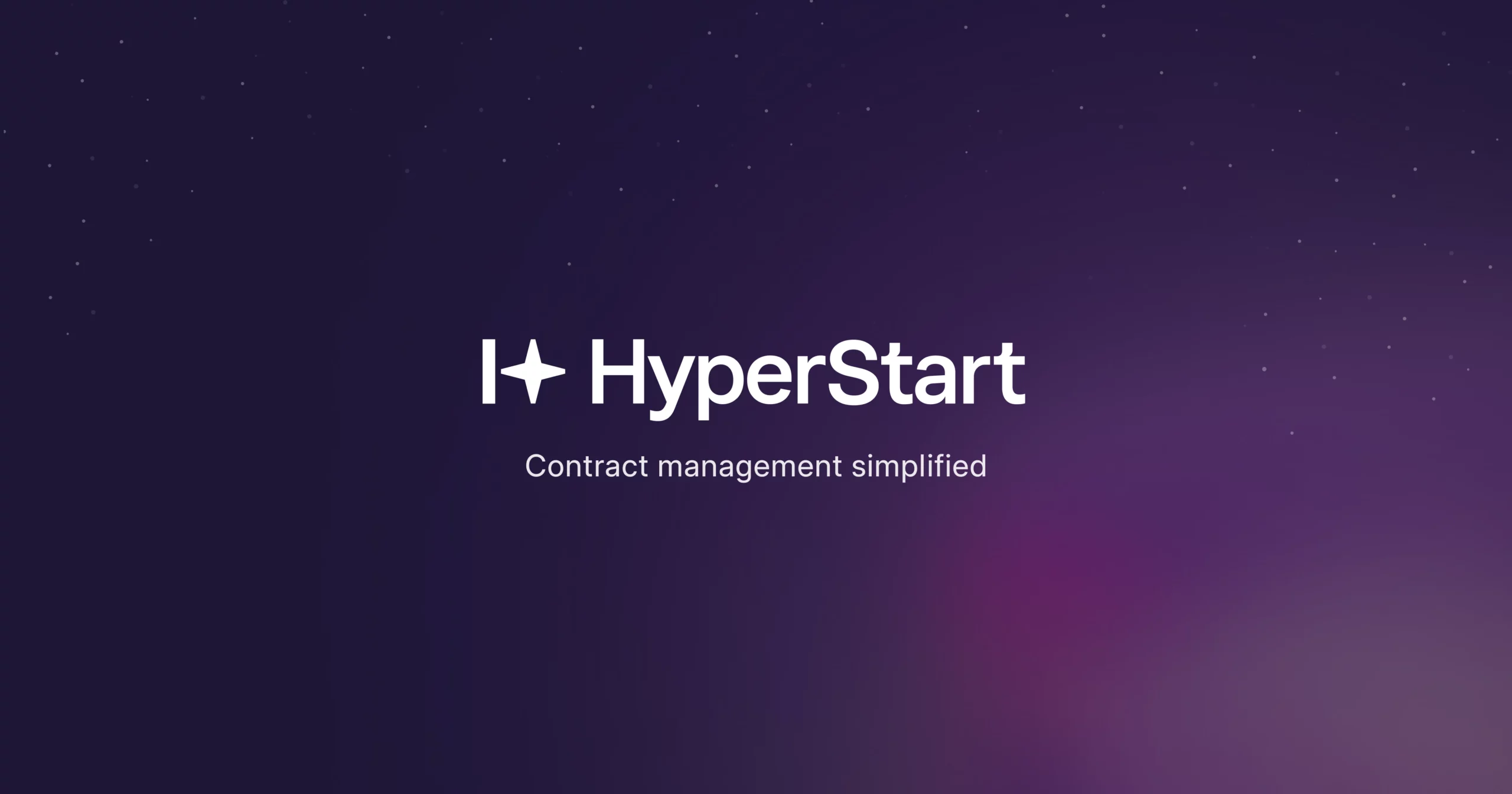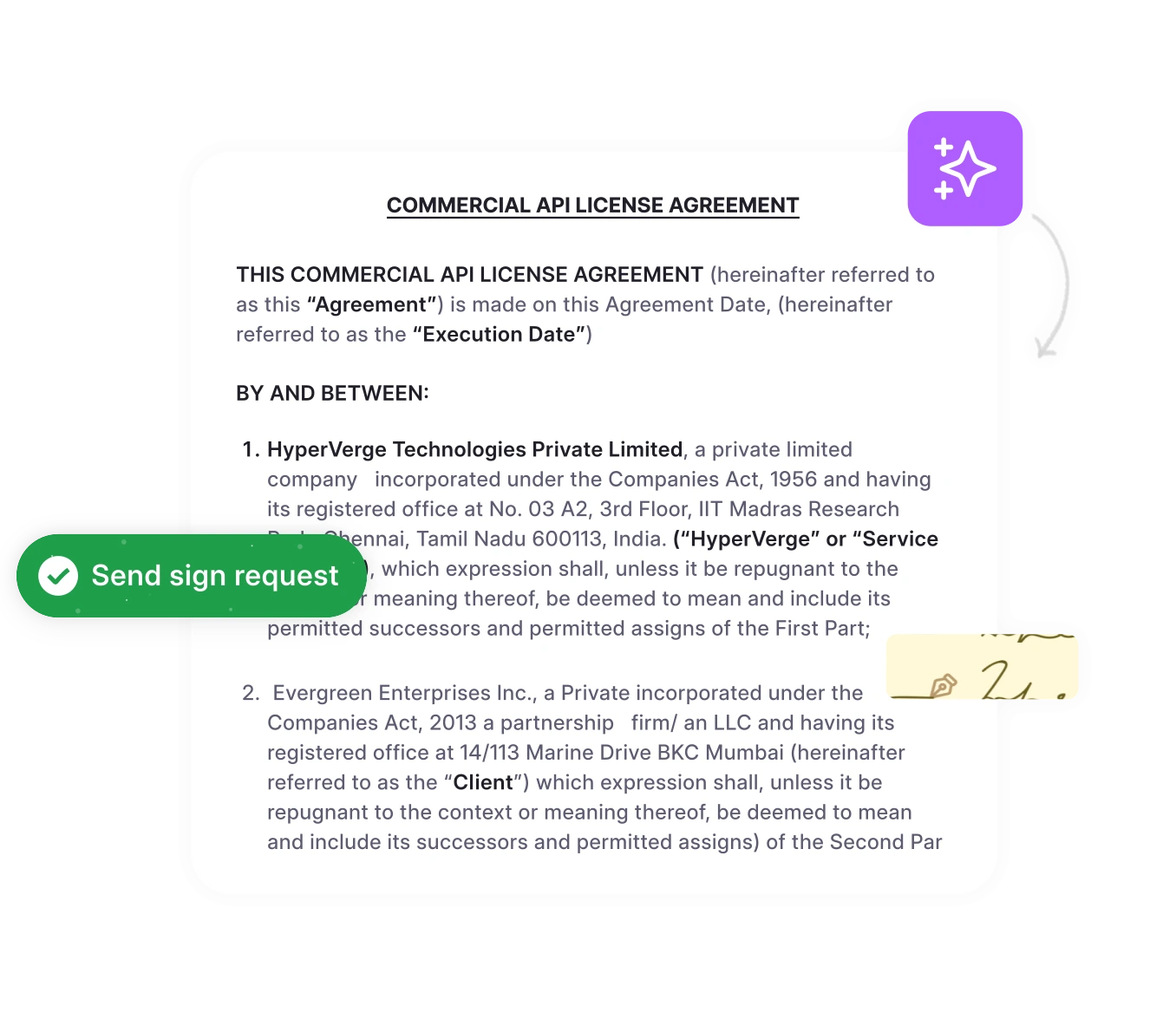TL;DR:
- Limitation of Liability (LoL) is a contractual provision that caps the amount of damages one party can be required to pay the other if something goes wrong.
- Its primary purpose is to manage risk, making potential financial risks predictable and preventing catastrophic losses from a single contract dispute.
- Key components include a liability cap, a waiver of consequential damages, and carve-outs.
- What makes an LoL clause enforceable?
The limitation of liability clause acts as a financial safety net for your business agreement when things don’t go as planned.
A software bug causes a critical outage, a supplier delivers a faulty component, or a service fails to deliver on its promise. This is where one of the most critical, and often misunderstood, clauses in any contract comes into play: the limitation of liability clause. It protects you from punitive damages that are disproportionate with the value of the contract.
This comprehensive guide will walk you through everything you need to know. We’ll break down what a limitation of liability clause is, why it’s essential, how to dissect its components, and how to negotiate it effectively.
What is a Limitation of Liability (LoL) Clause?
A Limitation of Liability (LoL) clause is a provision in a contract that restricts the amount and types of damages arising in the event of a breach or failure to perform. In essence, it sets a ceiling on financial exposure from a party’s potential liability. This is done so that risk is proportional to the value of the agreement, and nobody bears total liability for losses.
It answers a core question: “If the worst happens, what is the maximum financial responsibility we have?”
According to the World Commerce & Contracting Association, ‘limitation of liability’ is top among the most negotiated clauses with indemnification, price, termination, and scope following closely behind.
Without this clause, the default legal rules would allow a party to sue for a vast and unpredictable range of actual damages. For any business, this level of uncertainty is untenable.
Negotiating liability caps?
Benchmark and monitor the limitation of liability clauses and carve-outs with HyperStart CLM.
Book a DemoWhy are limitations of liability clauses essential?
Limitation of liability clauses are no excuse to shirk responsibilities. They are a fundamental component of commerce that allows businesses to operate and innovate without facing existential risk from every deal.
Here’s why they are so important:
Liability clauses are there to stop loss… stopping your losses is just as important as making more money.
1. Financial protection and predictability:
The clause defines the financial boundaries of the relationship, quantifying maximum risk from any single contract. This predictability is vital for financial planning, insurance underwriting, and overall business stability.
2. Encouraging business and innovation:
Imagine a startup providing a $1,000/month software service to a multi-billion dollar corporation. If a bug in that software causes a million-dollar loss for the corporation, holding the startup liable for the full amount would be catastrophic. Without an LoL clause, many smaller companies would be unwilling or unable to do business with larger ones, stifling innovation and competition.
3. Balancing risk and reward:
Contracts are supposed to represent a balanced exchange of value. The price of a product or service is calculated based on the cost to deliver it and the risk assumed. Liability cap clauses ensure the risk is proportional to the reward of the contract value.
4. Streamlining dispute resolution:
By clearly defining the financial stakes, LoL clauses can simplify legal dispute resolution. When both parties know the maximum potential recovery, it often encourages faster settlements and reduces the incentive for protracted, expensive litigation.
Anatomy of a limitation of liability clause (Key components)
A well-drafted limitation of liability clause is a carefully constructed provision with several distinct parts. Understanding these components is key to both drafting and negotiating them.
1. The liability cap
The liability cap is the absolute maximum amount of money a party can be liable for under the contract. This cap can be structured in several ways:
- Fees paid: The most common approach in SaaS and service agreements. The cap is tied to the amount of fees paid by the customer over a specific period (e.g., “the preceding 12 months”). This directly links the liability to the economic value of the relationship.
- Fixed amount: A specific dollar amount (e.g., “$1,000,000”). This is more common in high-value transactions or where fees are not recurring.
- The greater of two options: Sometimes, a clause will state the cap is “the greater of $500,000 or the fees paid in the preceding 12 months” to establish a minimum floor of liability.
2. Waiver of consequential damages
This is arguably more important than the liability cap itself. Consequential damages (also called indirect or special damages) are losses that are not a direct result of the breach but are a consequence of it.
- Direct damage: You buy a faulty server for $10,000. The server itself is the direct damage.
- Consequential damage: Because the server failed, your e-commerce site was down for 24 hours, and you lost $200,000 in sales. That lost profit is consequential damage or indirect damage.
Almost every LoL clause includes a waiver where both parties agree not to sue each other for these unpredictable, downstream damages.
3. Exclusions: critical exceptions to the rule
The liability cap isn’t absolute. ‘Carve-outs’ are specific types of claims that are excluded from the limitation of liability. These are the areas of gross negligence or misconduct that the responsible party should not be able to limit their liability. Understanding exclusionary clauses and how they work is essential for properly structuring these exceptions.
Common carve-outs include:
- Gross negligence or willful misconduct:
You can’t limit your liability for reckless or intentionally harmful actions.
In Morgan Stanley & Co. v. Archer Daniels Midland Co., 570 F. Supp. 3d 584 (S.D.N.Y. 2021), the court emphasized that New York law prohibits provisions that absolve a party from liability for gross negligence or willful misconduct.
- Breach of confidentiality:
If a party leaks sensitive information, the damages are often not capped.
In Rogue Wave Software, Inc. v. BTI Systems Inc., No. 1:16-cv-00891, D. Colo. (2018), the court considered whether a confidentiality breach was subject to the liability cap. It determined that such breaches are frequently carved out due to their potentially irreparable harm.
- Intellectual property (IP)infringement
A party that steals the other’s IP cannot hide behind the LoL clause.
Microsoft’s Enterprise Agreement typically includes an indemnity for IP infringement that is uncapped.
- Indemnification obligations
Liability related to third-party claims (covered under the indemnification provision) is typically uncapped.
In M/A-COM Technology Solutions Holdings, Inc. v. Litrinium, Inc., No. 2020-0600-PAF (Del. Ch. 2021), the Delaware Court of Chancery upheld that indemnification obligations—especially in M&A deals—often fall outside liability caps.
Data breaches
Increasingly, liability arising from a failure to protect personal data is carved out from the standard liability cap, often having its own separate, higher ‘super cap.’
In re Equifax Inc. Customer Data Security Breach Litigation, MDL No. 2800 (N.D. Ga. 2020), the scope and severity of the breach led to the interpretation that such liabilities are often treated with separate or uncapped liability terms.
Negotiating carve-outs is often where the toughest contract battles are fought.
4. Time limit
Claims must be brought within a set period—often 12 to 24 months post-breach. This contractual statute of limitations promotes finality. It protects parties from indefinite exposure while urging timely dispute resolution.
5. Survival of the Clause
This clause ensures certain obligations outlast the contract. Indemnity, confidentiality, and liability caps often survive termination. Explicit survival language prevents ambiguity and reinforces post-contract accountability.
6. Severability
If one clause is invalid, the rest still stand. Severability clause preserves the integrity of the agreement. Courts strike only the unenforceable part, not the whole contract—unless that provision is essential to the contract’s core.
7. Governing Law
Specifies which jurisdiction’s laws apply. This choice impacts interpretation, enforceability, and litigation outcomes. Parties often select a neutral or home-state jurisdiction to reduce uncertainty and forum shopping.
Manage clauses at a glance
Generate real-time dashboards of capped vs uncapped liabilities by vendor, deal, or team.
Book a DemoLimitation of liability vs. indemnification
People often confuse these two clauses, but they serve opposite functions.
| Feature | Limitation of Liability | Indemnification |
| Analogy | A Shield | A Sword |
| Purpose | Limits your own liability to the other party for damages you cause (first-party claims). | Obligates you to pay for the other party’s losses arising from claims made by a third party. |
| Scope | Caps the amount of damages recoverable between the two contracting parties. | Covers legal fees, settlements, and judgments from lawsuits brought by outsiders. |
| Example | If our software fails and you sue us, we will only pay you up to the amount specified in the LoL clause. | If a third party sues you because our software infringed their patent, we will pay your legal bills and any judgment against you. |
In short, limitation of liability protects you from the person you’re contracting with, while indemnification protects you from the rest of the world.
Is your limitation of liability clause enforceable?
Courts to deem the clause enforceable based on several factors:
- Clarity and unambiguous language: The clause must be written in clear, simple language that is easy to find and understand. It cannot be buried in tiny print.
- Equality of bargaining power: Courts are more likely to enforce LoL clauses in B2B contracts where both parties are considered sophisticated and have the ability to negotiate.
- Reasonableness and proportionality: The limitation must be reasonable and proportionate to the contract value.
- Public policy: An LoL clause cannot limit liability for actions that are against public policy, such as fraud, intentional harm, or, in many places, gross negligence.
The specific rules vary by jurisdiction, so understanding the governing law of the contract is essential.
Real-World Examples of LoL Clauses
Let’s see how these clauses look in practice across different industries.
- SaaS Agreement: “In no event will either party’s aggregate liability arising out of or related to this agreement exceed the total amount paid by the customer hereunder in the 12 months preceding the last event giving rise to liability. The foregoing limitation will apply whether an action is in contract or tort and regardless of the theory of liability. … in no event will either party have any liability to the other party for any lost profits, revenues, or indirect, special, incidental, consequential, or punitive damages.”
- Professional Services / Consulting Agreement: “The entire liability of Consultant and its agents for any claim, loss, or damage arising from this Agreement shall be limited to the total fees paid to Consultant for the services rendered under the applicable Statement of Work.”
- Manufacturing / Supply Agreement: “Seller’s liability for any defective product shall be limited exclusively to the replacement of the product or a refund of the purchase price. Seller shall not be liable for any costs related to labor, installation, or loss of use.”
How to negotiate limitation of liability clauses
Liability clauses there to stop loss… stopping your losses is just as important as making more money.
This clause is rarely a ‘take it or leave it’ proposition. Here are tips for both sides of the table.
If you’re a vendor seeking to limit liability
💪 Start with a strong standard:
Your template contract should have a strong, clear LoL clause that ties the cap to 12 months of fees and includes a broad waiver of consequential damages.
🤓 Hold your position:
Explain that the pricing is based on this allocation of risk. If the customer wants you to take on more liability, the price will have to increase accordingly.
⛔ Resist carve-outs:
Be very careful about what you agree to carve out. For data breaches, try to negotiate a separate, higher cap (e.g., 2-3x the standard cap) rather than unlimited liability.
If you’re a customer seeking more protection:
👉 Push for a higher cap:
Argue that 12 months of fees may not be enough to cover your direct damages if a critical failure occurs. Propose a higher fixed amount or a multiplier (e.g., 24 months of fees).
🧐 Scrutinize the carve-outs:
This is your most important job. Ensure that key risks specific to your business are carved out. For a tech company, IP infringement is critical. For a healthcare provider, breaches of patient data are paramount.
⚖️ Demand mutuality:
Ensure the LoL clause applies equally to both parties. If the vendor wants to limit their liability, you should be able to limit yours as well.
Single global cap or multiple caps?
Here’s a nutshell view of similar disputes that led to different outcomes
| Drax v Wipro (2023) | Royal Devon & Exeter NHS Trust v ATOS (2017) | |
| Contract Value | £11.5 million over 5 years (£7.5 million in year one) | £5 million for an IT system implementation |
| Claim | Drax sought £62.5 million in damages after terminating the contract | Trust brought claims for breach of separate obligations under different contract sections |
| Argument | Drax argued that multiple liability caps applied, potentially allowing over £130 million in recovery | Trust argued that each breached obligation triggered a separate liability cap, allowing claims to stack |
| Defense | Contract expressly set out separate caps tied to different obligations Clauses were drafted discretely, each with their own cap language The court viewed this as a deliberate structure indicating multiple financial limits Supported by the lack of a unifying “total liability” language seen in Drax | ATOS’s maintained that a single cap covered all claims, limiting total exposure |
| Court’s Decision | Sided with Wipro—single cap applies | Sided with the Trust—multiple caps applied |
| Key Reasons | Clause referred to “the total liability“—suggesting a unified cap Other clauses used “per event” to indicate multiple caps—this one did not Structure matched another single-cap clause (data protection) A £130M cap on an £11.5M contract was commercially disproportionate | Contract expressly set out separate caps tied to different obligations Clauses were drafted discretely, each with their own cap language The court viewed this as a deliberate structure indicating multiple financial limits Supported by the lack of unifying “total liability” language seen in Drax |
Which is better?
There is no universal ‘right answer.’ It depends on contract structure and risk appetite:
- Single global caps offer simplicity but risk early depletion, which can leave limited protection. Better for suppliers.
- If customers fear repeated claims, they may demand a higher global cap, making it more beneficial for suppliers to instead offer lower annual caps to manage risk more predictably.
Best Practice: Draft explicitly. If you want multiple caps, spell them out per clause or per event. Courts prioritize clarity.
Mastering limitation of liability clauses with a CLM
Few clauses carry as much weight as limitation of liability provisions. They are the first line of defense against contract risk. Contract management software can help you benchmark, review, sign off, and track the clause without the chore work like drafting it from scratch, chasing approvals and signatures, and manual tracking and reporting.
“No two contracts are alike and any benchmarking exercise needs to recognize this.” Key elements of an effective benchmarking clause are:
A modern CLM platform like Hyperstart can help you build your first line of defense with the following features:
- Start with a gold standard 🏅
These dynamic approval workflows reflect your risk tolerance and business model. Whether you’re limiting liability to annual fees, implementing mutual caps, or carving out specific damages, consistency is key
- Create a negotiation playbook 🤝
Every limitation of liability clause tells a story of negotiation. Document your standard terms, acceptable fallback positions, and absolute red lines based on different scenarios.
- Track every change ⏱️
During negotiations, maintain a clear audit trail of how your LoL positions evolved. Was that unlimited liability provision added in the final hour? That’s documented automatically. Understand these patterns to refine your negotiation strategy. With version control, compare with older versions but sign off on only the version you agreed to.
- Analyze them from the balcony 📊
Contracts are not negotiated in isolation, or you’d miss the forest for the trees. HyperStart’s AI-powered metadata extraction can identify clause variations, flag non-standard terms, and generate dashboards that give you real-time visibility into your risk profile.
Conclusion: From boilerplate to a strategic tool
The limitation of liability clause is far more than just legal boilerplate. It is a fundamental, strategic tool for managing risk, enabling innovation, and creating fair and balanced business relationships. Managing them with a CLM accelerates deal velocity.
The goal isn’t to eliminate all risk—it’s to understand, quantify, and manage it strategically. Ready to take control of your contract risk? See how Hyperstart’s AI-powered CLM platform can help you manage critical clauses, assess liability across your entire portfolio, and negotiate smarter. Book a demo.











